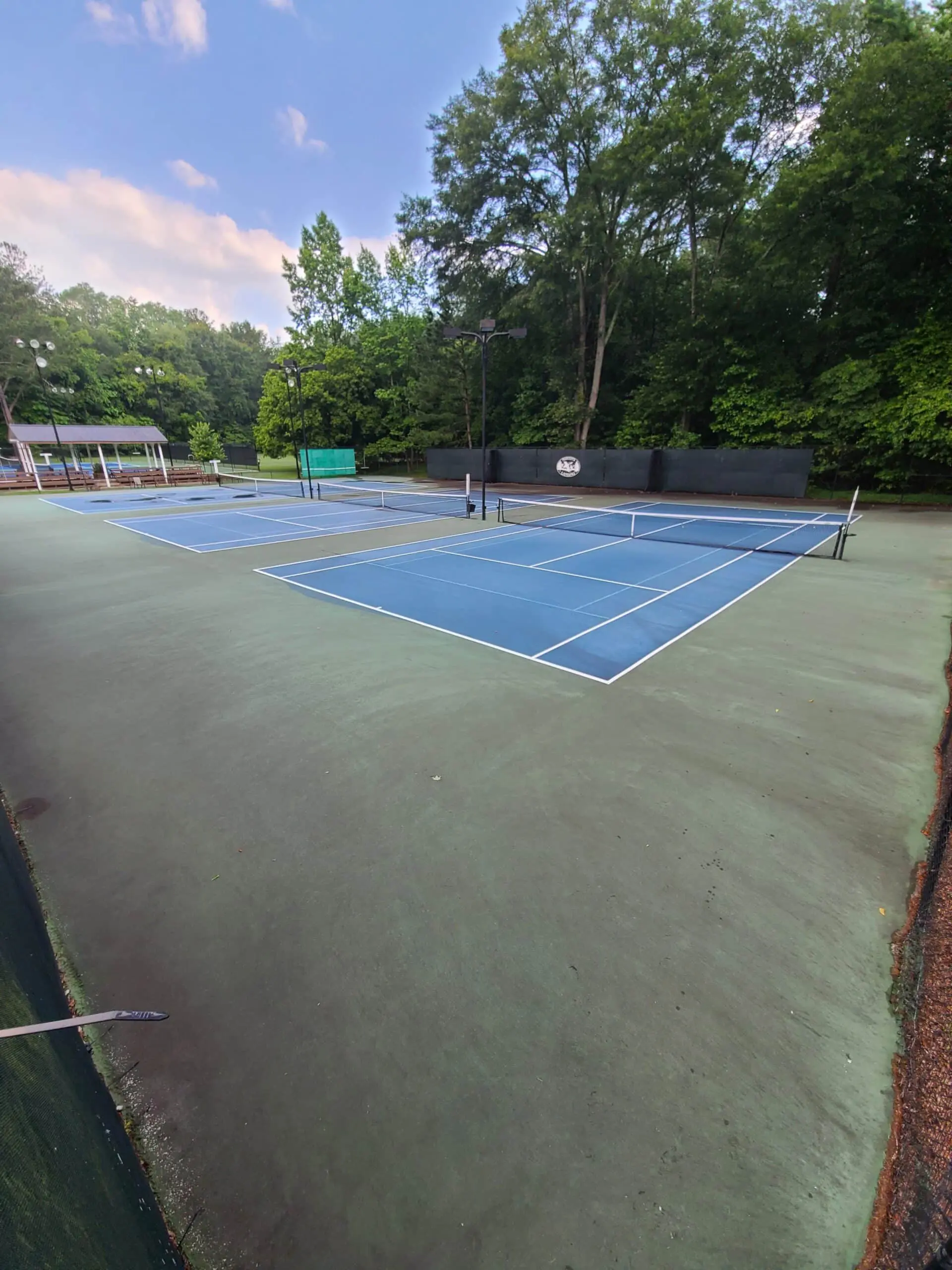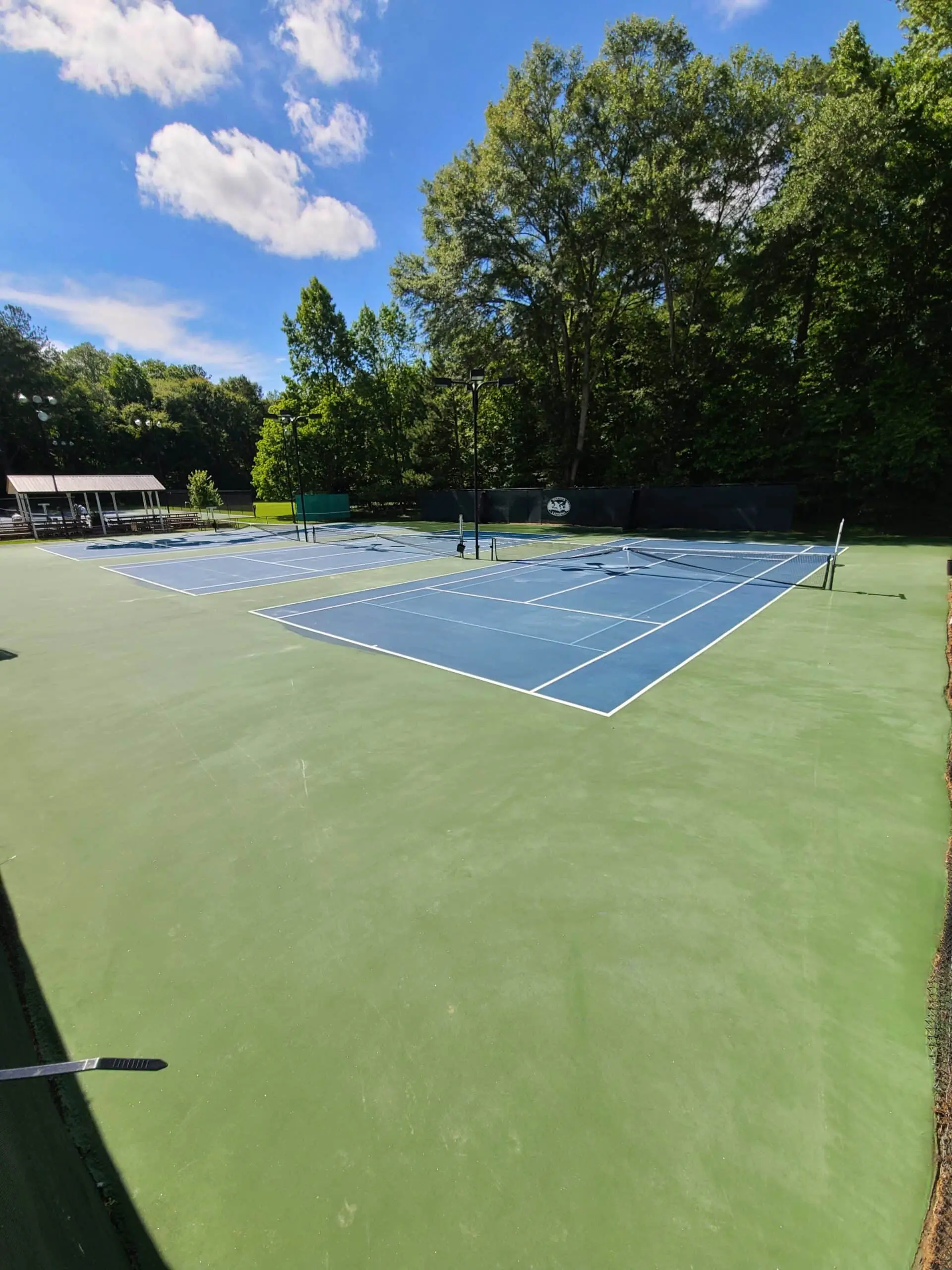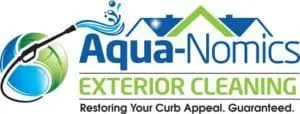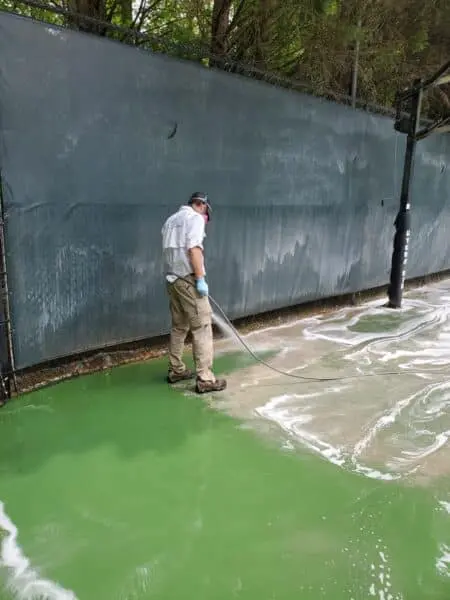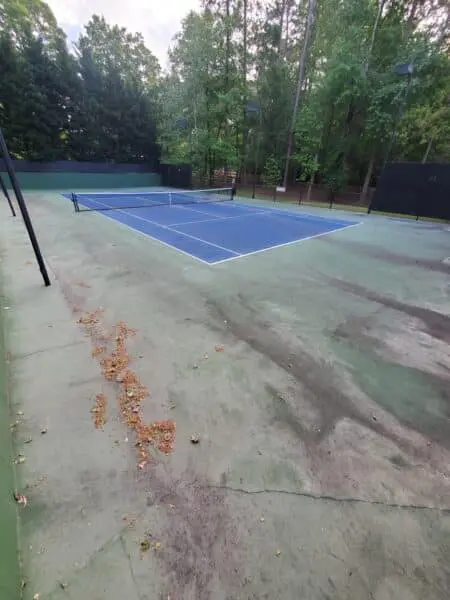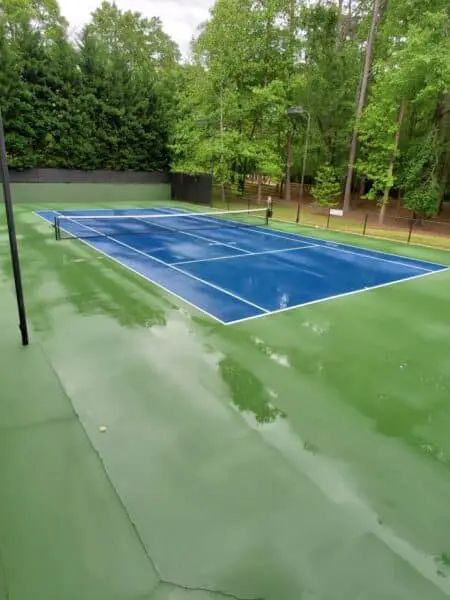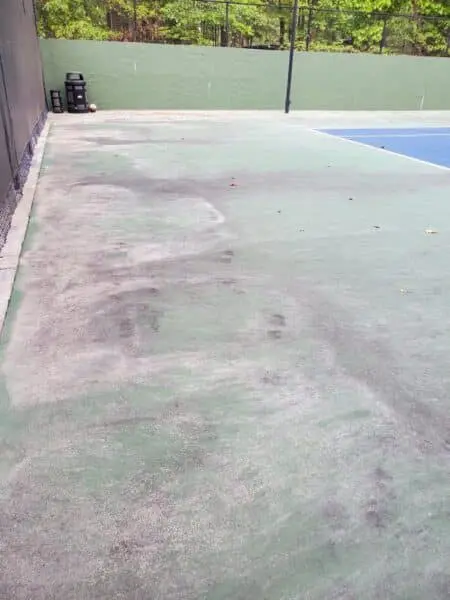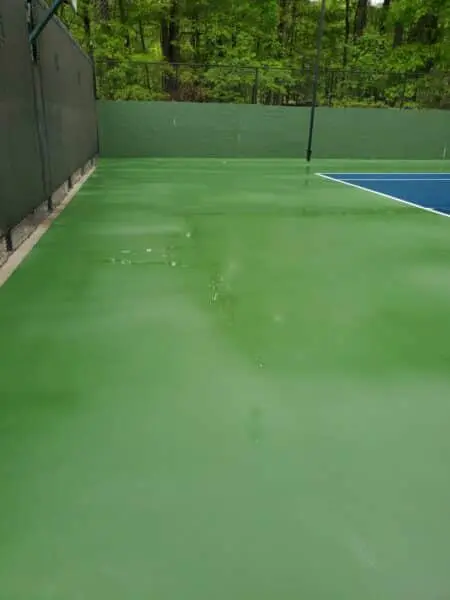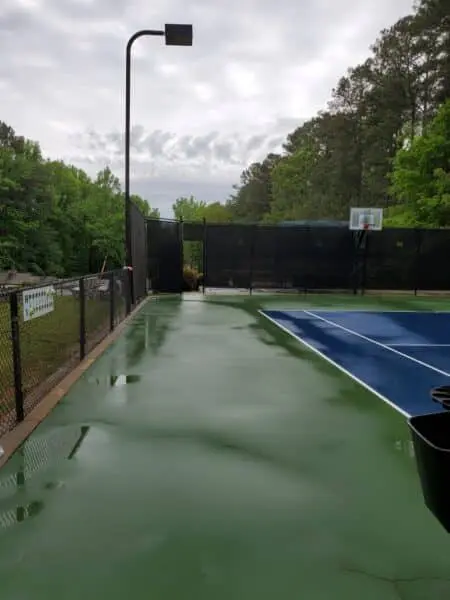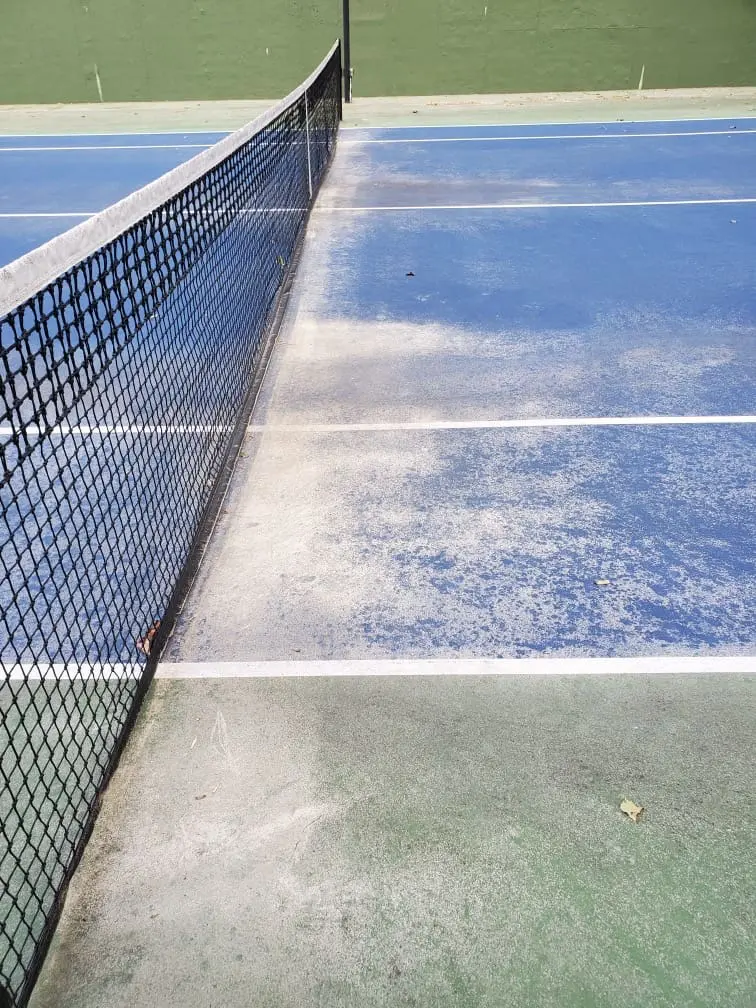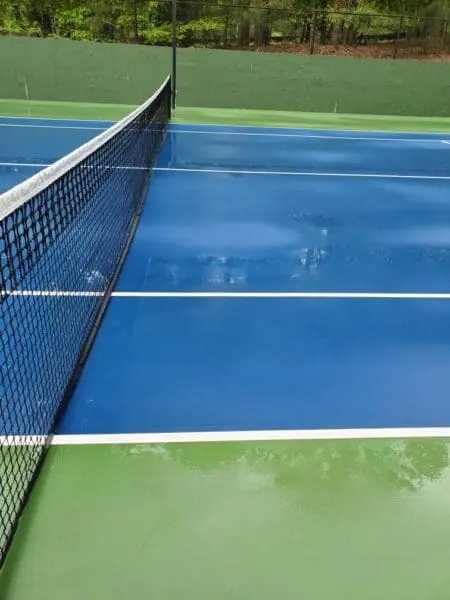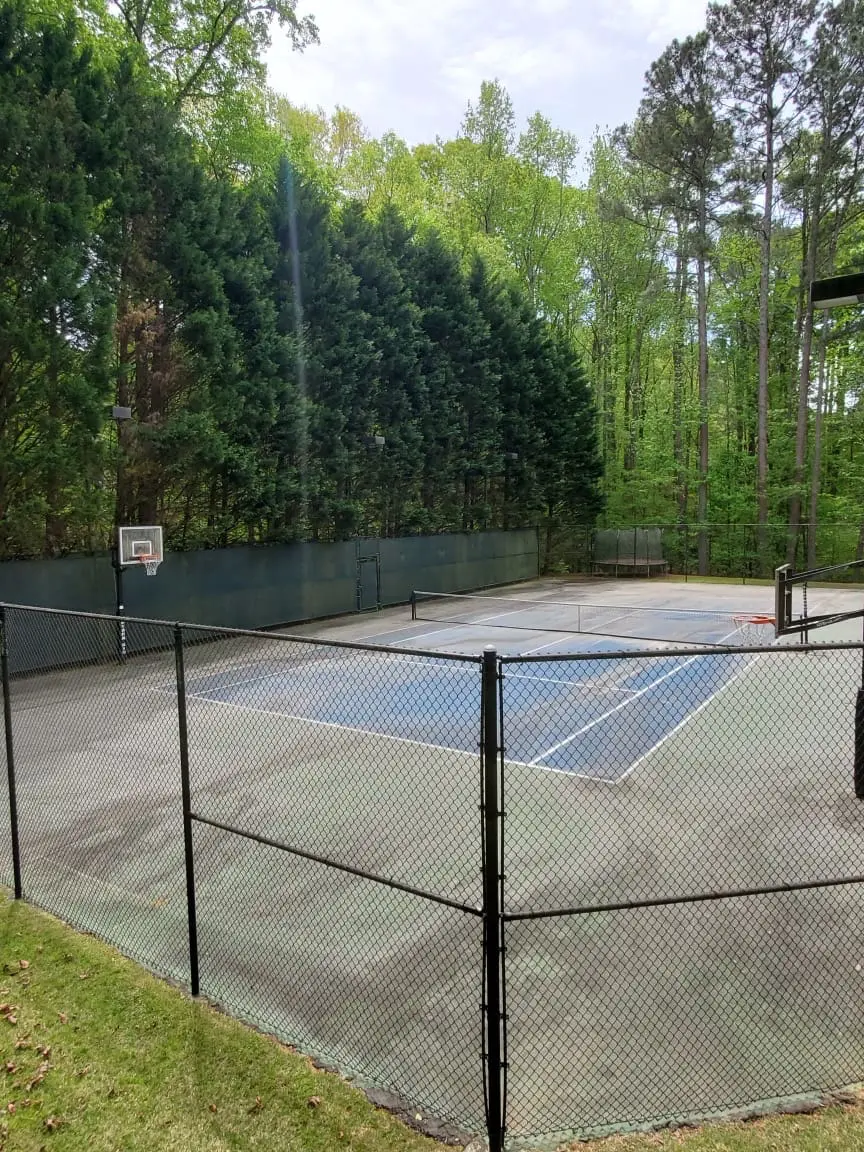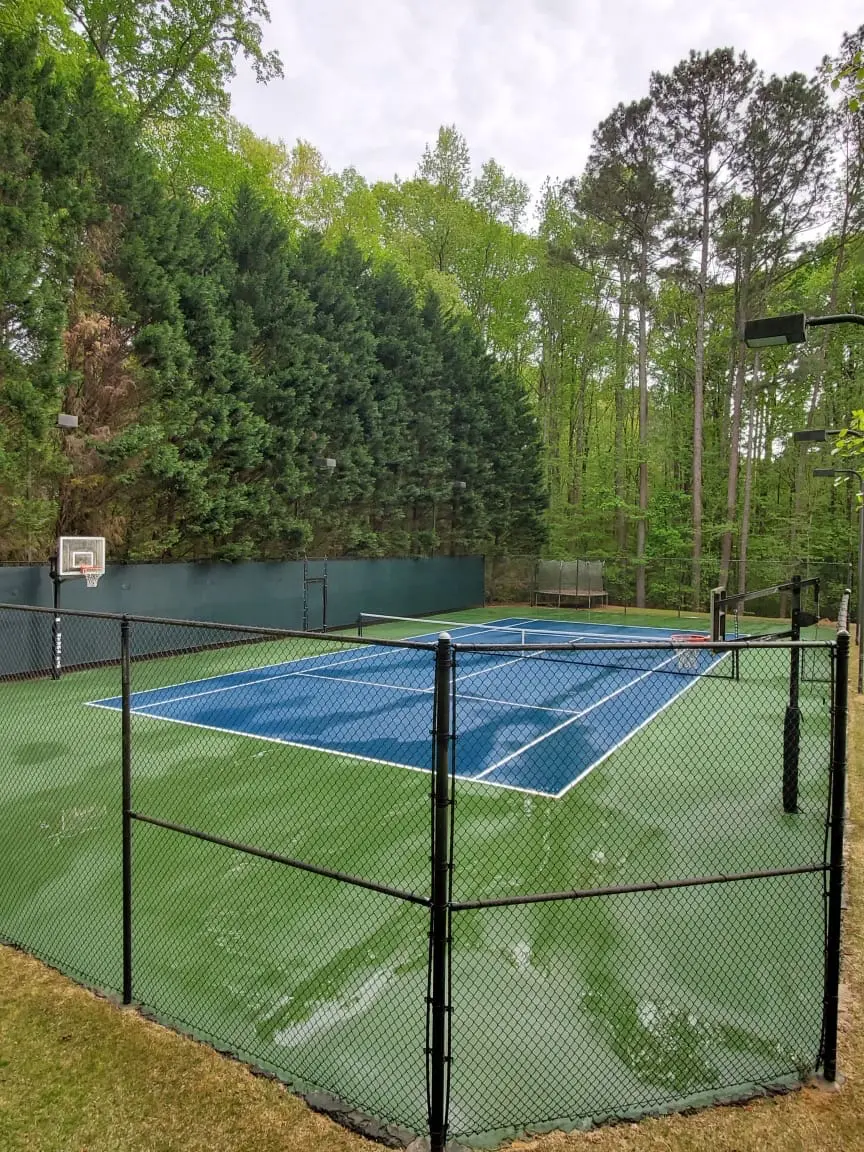Professional Tennis Court Cleaning - Without the Risk
Most tennis courts here in North Georgia are made of asphalt with a painted acrylic coating on top.
Mold and mildew tend to build up especially in the corners and where trees overhang. To properly clean this surface, and not damage it, requires the right equipment, chemicals, and expertise.
That is where Aqua-Nomics Pressure Washing and Roof Cleaning comes in! Our tennis court cleaning in Alpharetta provides the safest way to clean and restore your tennis courts without causing damage while saving you thousands in resurfacing costs.
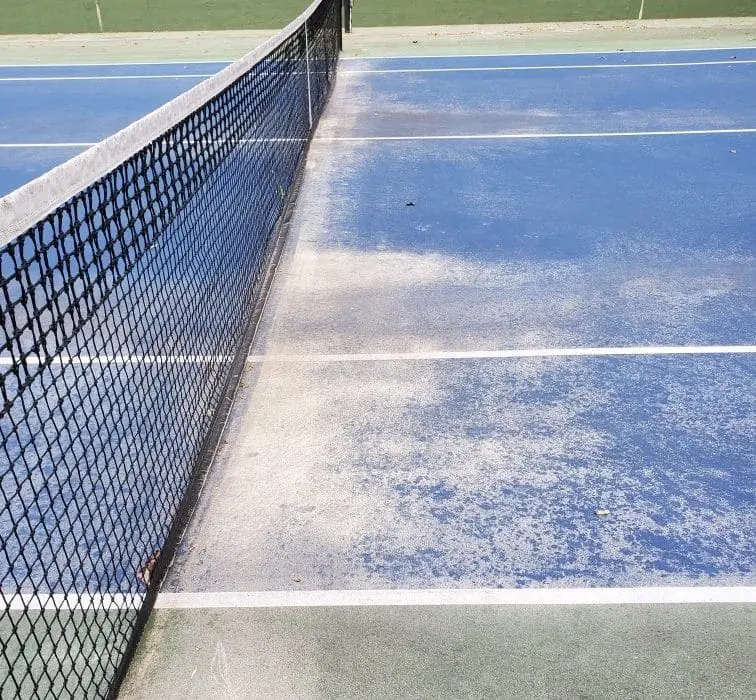
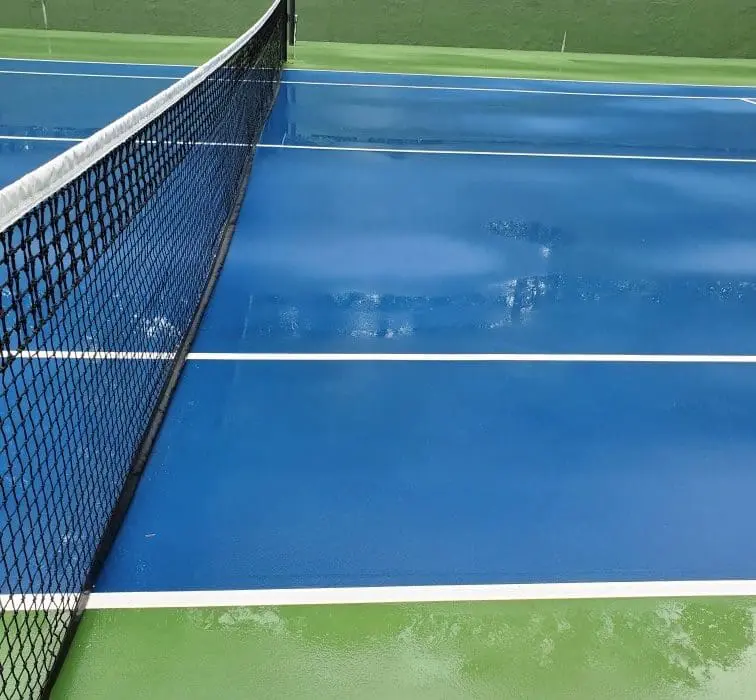
What Not To Do
Tennis courts must be chemically treated, not just pressure washed. You should never pressure wash a tennis court with high-pressure wands, consumer-grade equipment, and inexperienced personnel. In the best case, this does not properly clean. In the worse case, it can severely damage the surface by leaving "wand scars" everywhere, especially if using the wrong nozzle or pressure.
Here’s an example of what some well-intentioned, but ill-equipped volunteers did for their HOA:
By trying to save a few hundred dollars, it can cost your club or community $5,000 or more to re-surface.
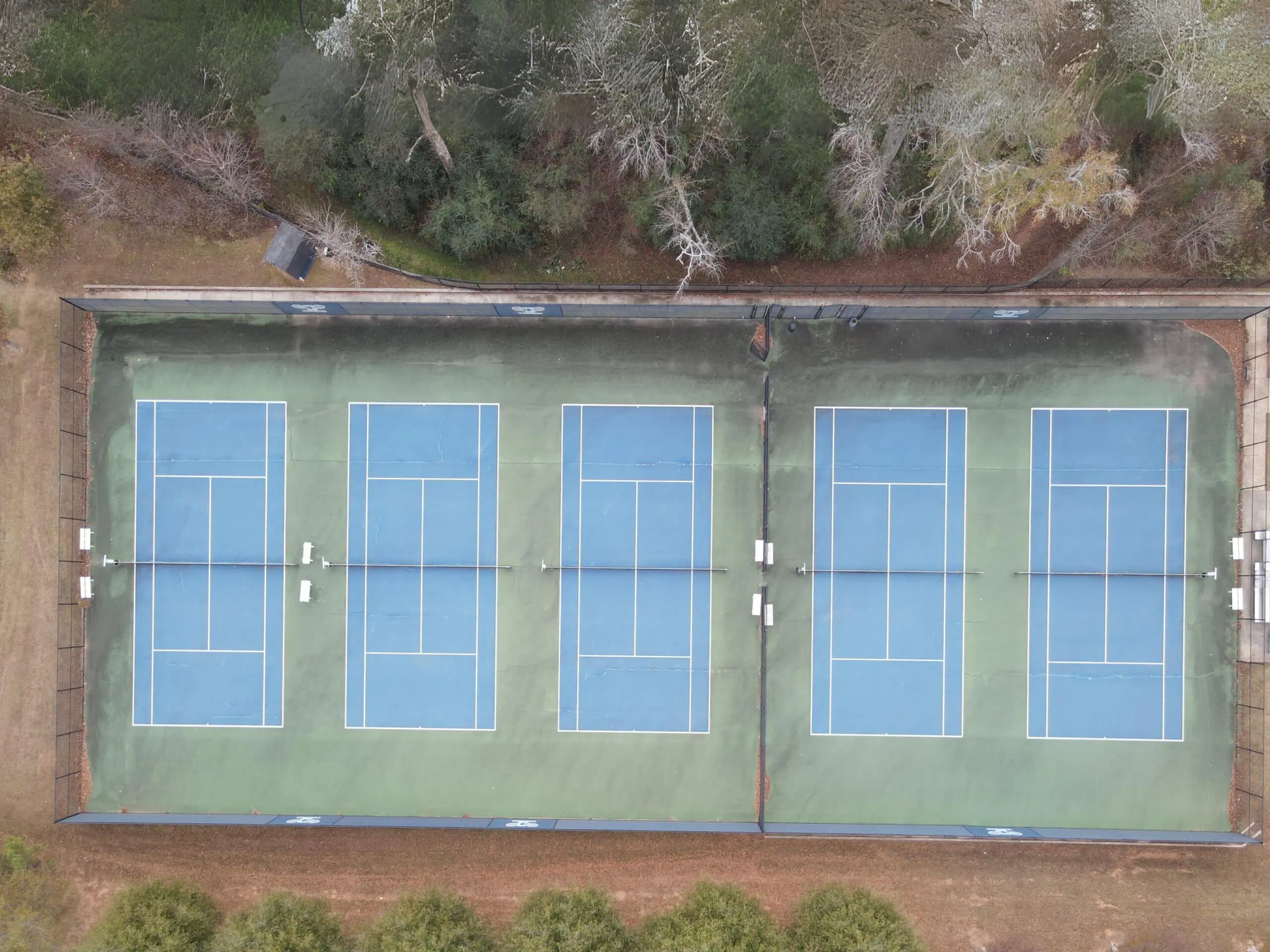
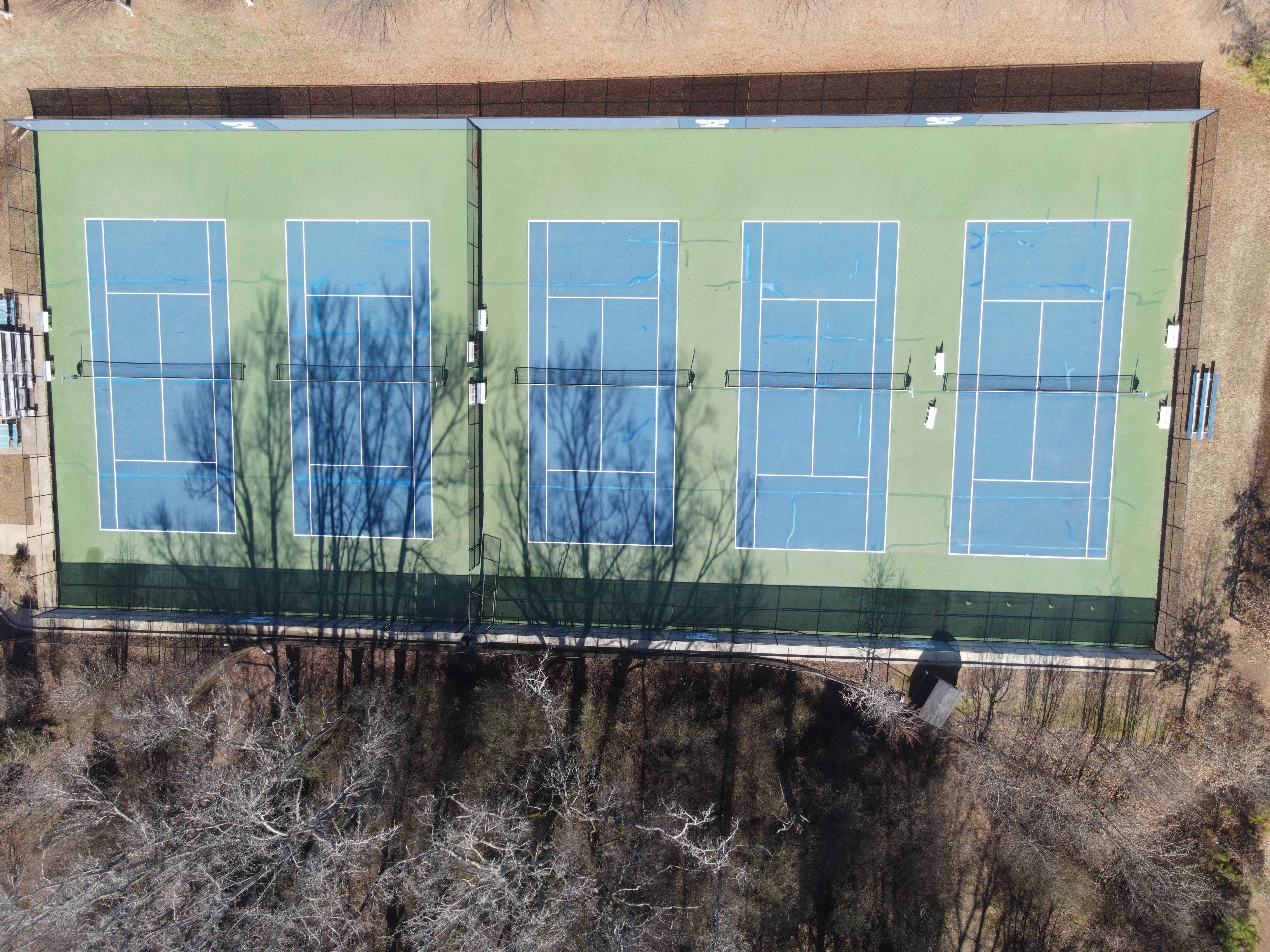
Tennis Court Cleaning & Resurfacing in Alpharetta, Atlanta, Marietta, Cumming, John's Creek & More
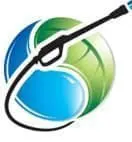
SportsMaster and the ASPA recommend professionally cleaning tennis courts at least once a year and resurfacing them every 5- 8 years.

The same way mold & algae eat through the stain on your deck or the paint on your house, allowing it to sit on the acrylic coating of your tennis court will “eat away” at the finish, significantly reduce court life.

Cleaning is only a fraction of the resurfacing cost; so proper, annual cleaning and routine maintenance will help extend the life of your court, and ultimately save you money.

Tennis courts should have leaves and debris blown off daily or weekly (especially during pollen season), and use court rollers to squeegee out any sitting water on courts after each rain. A light, maintenance cleaning using some soap and bristle brushes should be done at least quarterly. Combined, these actions will reduce the likelihood of mold and mildew forming, which is what “eats away” at the court and decreases its life span.

Courts should be professionally cleaned once a year. At Aqua-Nomics, we follow the cleaning process recommended by the ASPA. Note, however, this can only be done on courts in relatively good condition -- typically less than 3 years old. If the court is old, chalky, or gritty (the paint and sand come up in your hand), our wands and surface cleaners will likely leave “striping lines” -- and the court may need to be resurfaced instead.

In the case of old, worn courts, our process will make the court less slippery (restore safety), and bring back some color, but should be done primarily as preparation for resurfacing. We make "best-effort" to clean older or poorly maintained tennis courts.

The condition of the court surface completely dictates the results we can achieve through cleaning. Cleaning or pressure washing, even done the right way, cannot compensate or failing court surface.
